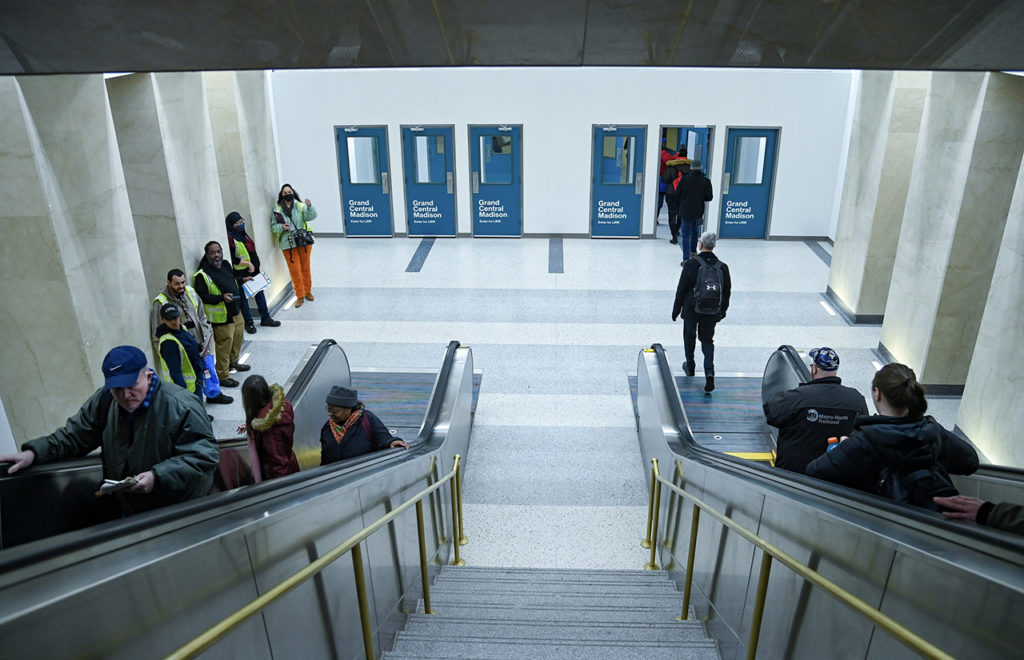
Grand Central Madison Open for Business
Written by David Peter Alan, Contributing Editor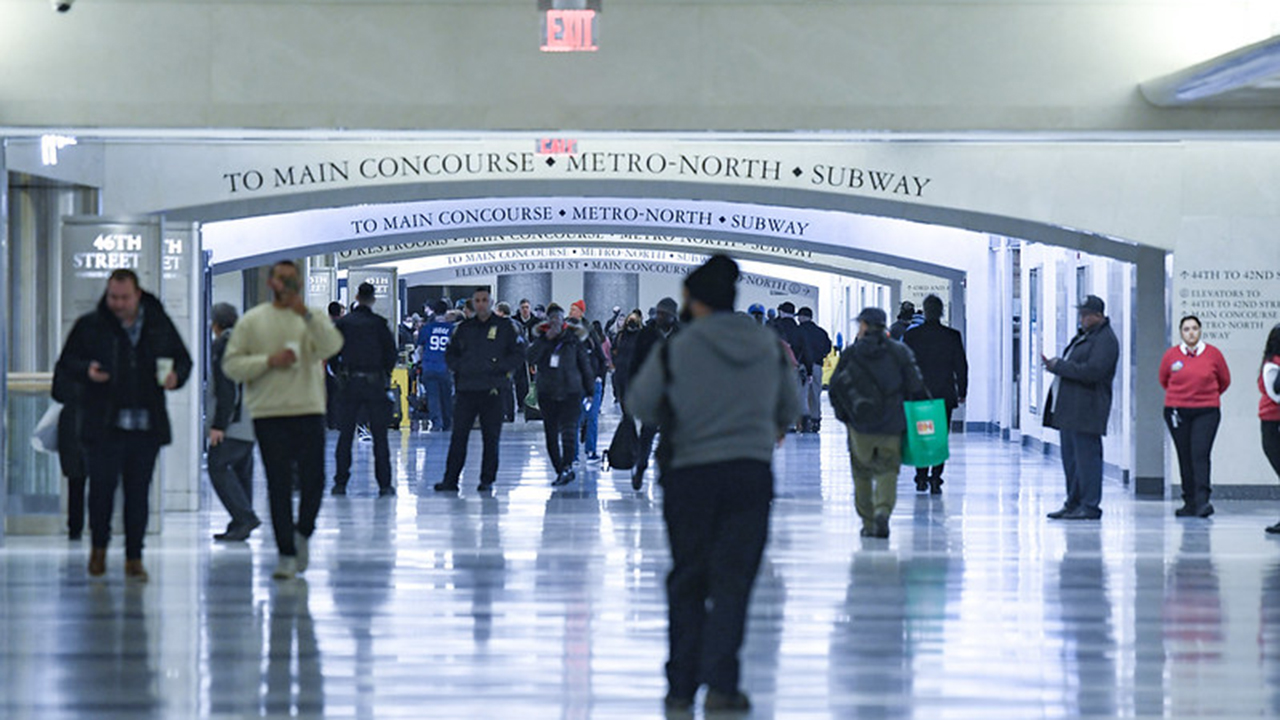
Marc A. Hermann/MTA
Originally planned for completion in 2009, the Long Island Rail Road’s East Side Access Project is finally finished and in service. On Jan. 25, revenue trains ran from the LIRR’s Jamaica station to a new terminal facility 14 stories beneath Madison Avenue in Midtown Manhattan. The new terminal is slightly northwest of Metro North’s historic Grand Central Terminal. The New York Metropolitan Transportation Authority (MTA) has named the new facility “Grand Central Madison.”
Grand Central Madison stretches from 45th to 48th Streets, with a mezzanine-level walkway that connects to Grand Central Terminal. There are eight stub-end tracks: four over four and numbered 201-204 and 301-304, a sort of continuation of the numbering in the original GCT, where upper-level tracks bear two-digit numbers and lower-level tracks are numbered in the 100s.
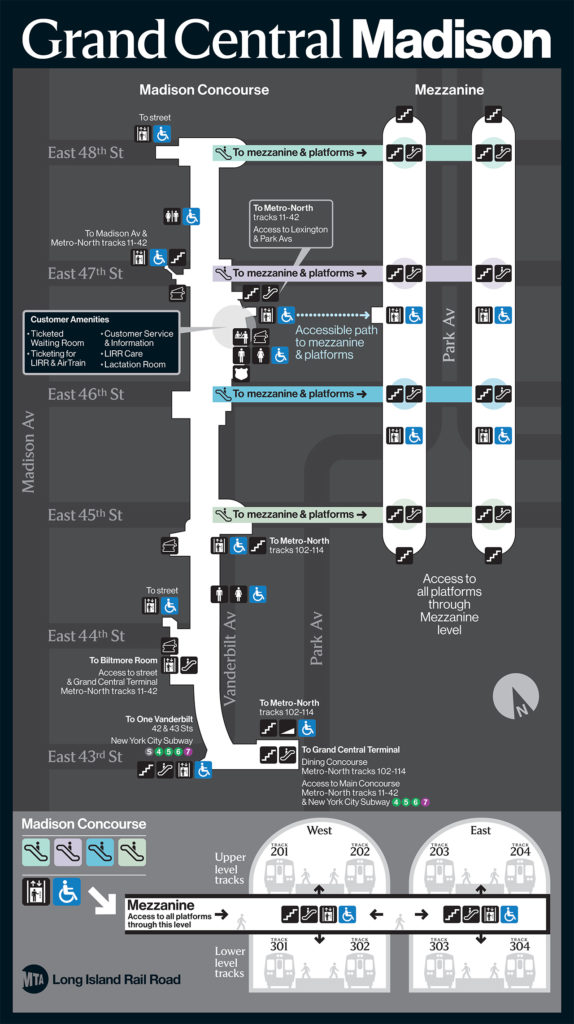
For more than a century, LIRR riders have had West Side access to Penn Station, as well as service to Atlantic Terminal in downtown Brooklyn, which replaced a much-larger one roughly a half-century ago. Giving Long Islanders East Side access is not a new idea; a plan was developed in the 1950s and proposed in 1963. Construction began in 1969 on the 63rd Street Tunnel, a two-over-two tube that was built to house tracks for the subway on the upper level and for the LIRR on the lower. Construction was stalled when the city became caught up in a fiscal crisis in the mid-1970s. The tunnel was eventually completed after decades of delays, and the subway system’s F-Train began running on its upper level in 2001. Now, 22 years later, the lower level finally has LIRR revenue trains running in it. Non-revenue trains began running on January 11.
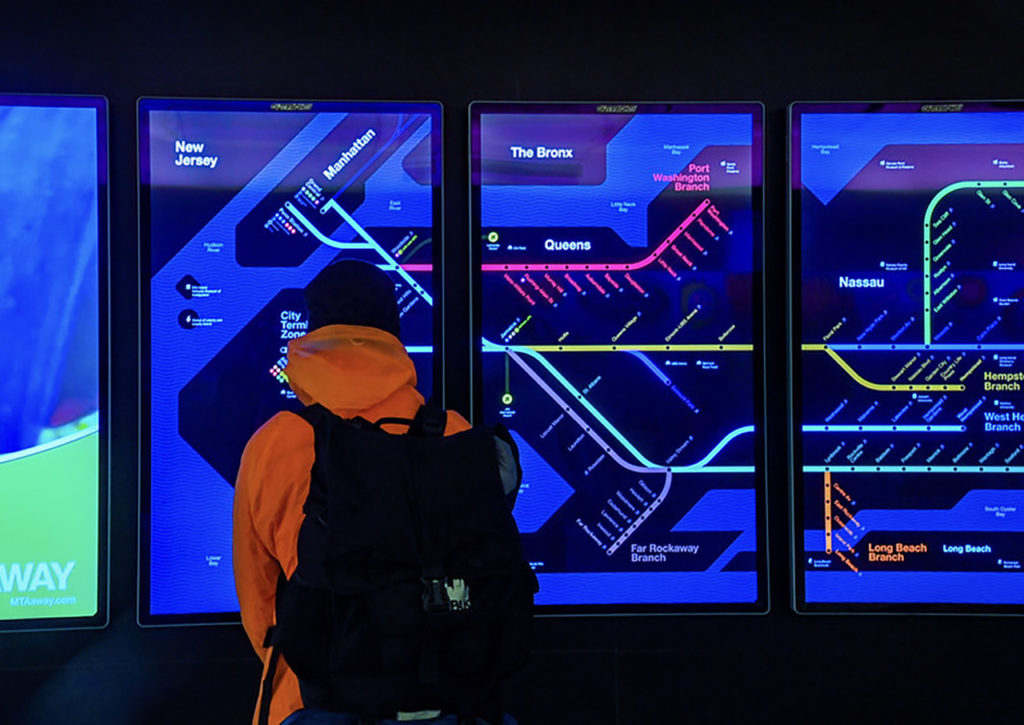
Chris Bastion, a retired MTA planner, told Railway Age that East Side Access was part of an overall plan for service improvements at the MTA that also included the Second Avenue Subway, the first phase of which—a segment extending from 57th Street to 96th Street—is in service today). There was also the ARC (Access to the Region’s Core) Project. One of the proposals for the latter was to bring trains from the LIRR and NJ Transit into Grand Central Terminal. A 1999 plan called for bringing the LIRR into the existing lower level at GCT. Alternative G of the ARC plan would have brought trains from New Jersey into GCT as well, but both plans were scrapped, and the new deep-cavern terminal was built instead.
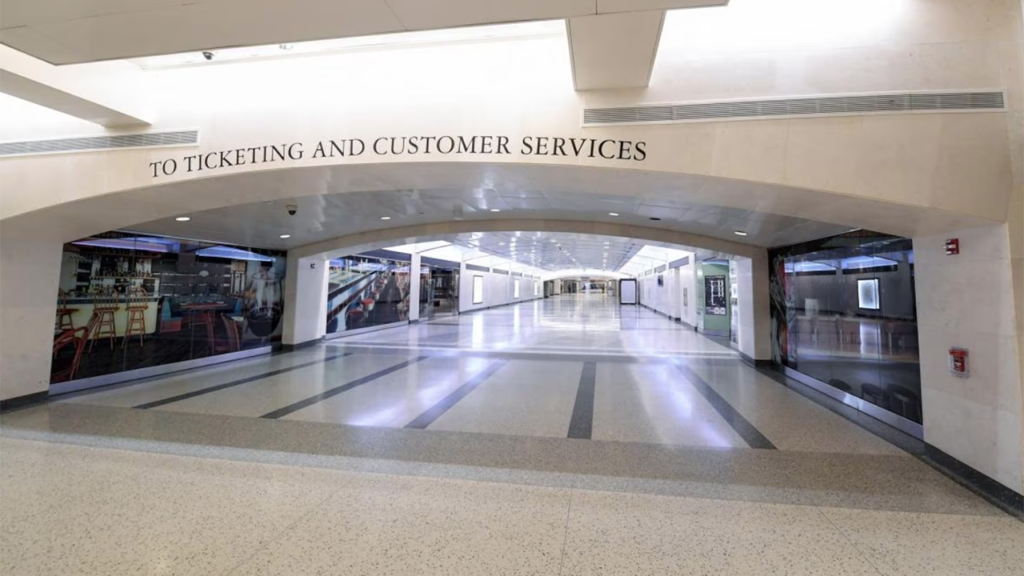
New, Temporary Schedule
The LIRR calls the new service “Grand Central Direct.” The timetable effective Jan. 26 shows the first morning train from Jamaica scheduled to leave at 6:17, and the first morning train from Manhattan scheduled to leave at 9:15, as peak-period service is scheduled to run in the prevailing direction only, to Manhattan in the morning and only to Woodside and Jamaica after 4:00 pm. Trains are scheduled to run more often during the mid-day, approximately every half-hour, with alternate trains running non-stop or stopping at Woodside, Forest Hills and Kew Gardens in Queens, the same intermediate stops that trains between Penn Station and Jamaica make. On weekends, the midday pattern will run through the day from shortly after 7:00 in the morning, until after 10:30 pm. There will be hourly expresses and hourly locals in both directions, with roughly half-hour spacing between local and express trains.
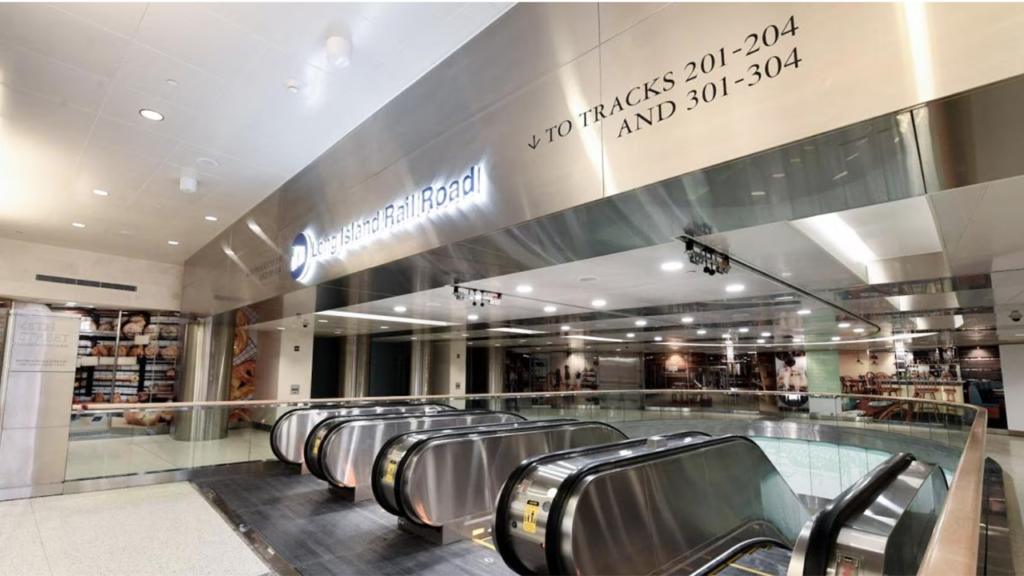
The First Ride
The very first revenue train left Jamaica at 10:46. Before departure, a special announcement came over the station PA system: “Come share this historic moment with us.” The mood on the platform before departure and on the train was festive. As the train left Jamaica, the crowd on board broke into applause and cheered. A voice on the train’s PA system announced that the new service marks the first service expansion on the LIRR since the railroad started running to Penn Station in 1910. New York Gov. Kathy Hochul, MTA Chair and CEO Janno Lieber and Interim LIRR President (and current Metro-North President) Catherine Rinaldi were on board. The train arrived on time at Grand Central Madison at 11:07.
Time for Politics
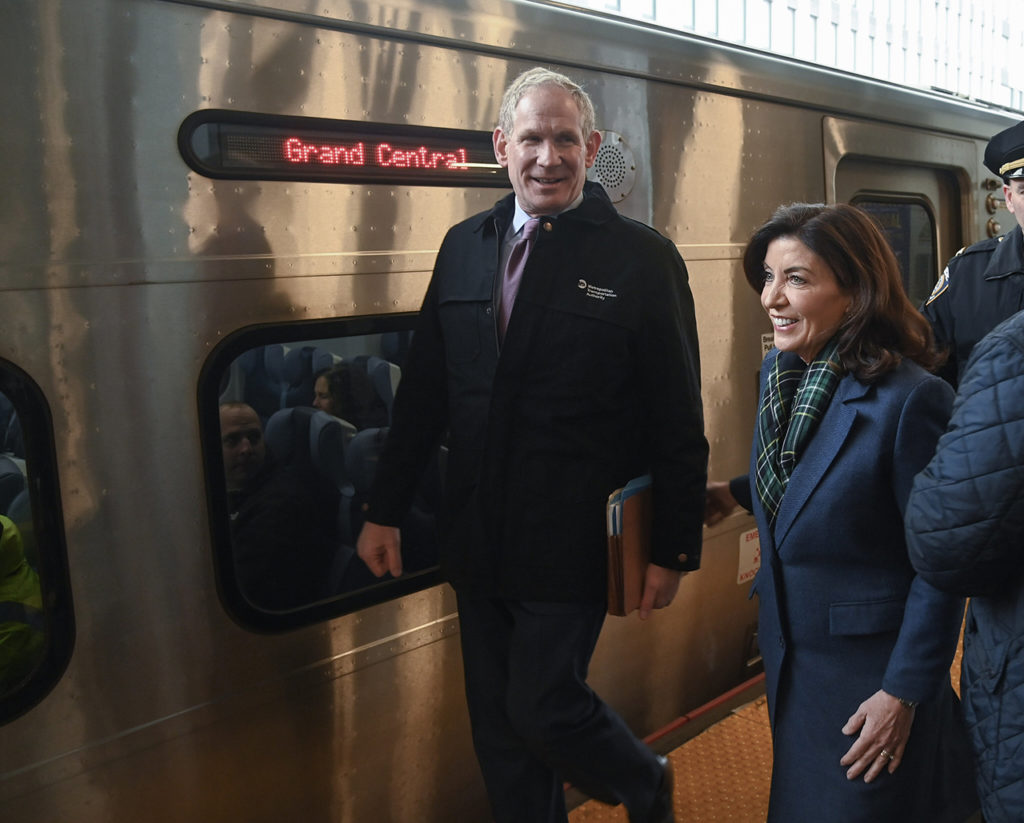
After the train arrived, there was a press event at the mezzanine level. Hochul and Lieber shared the spotlight. Hochul led off, saying, “We got the job done.” She cited “roadblocks, detours and challenges” along the way and said that she is the ninth governor since the project began. She added: “There’s nothing you can’t do in the State of New York” and said that there will be no more “going to Penn and doing a backtrack to the East Side.”
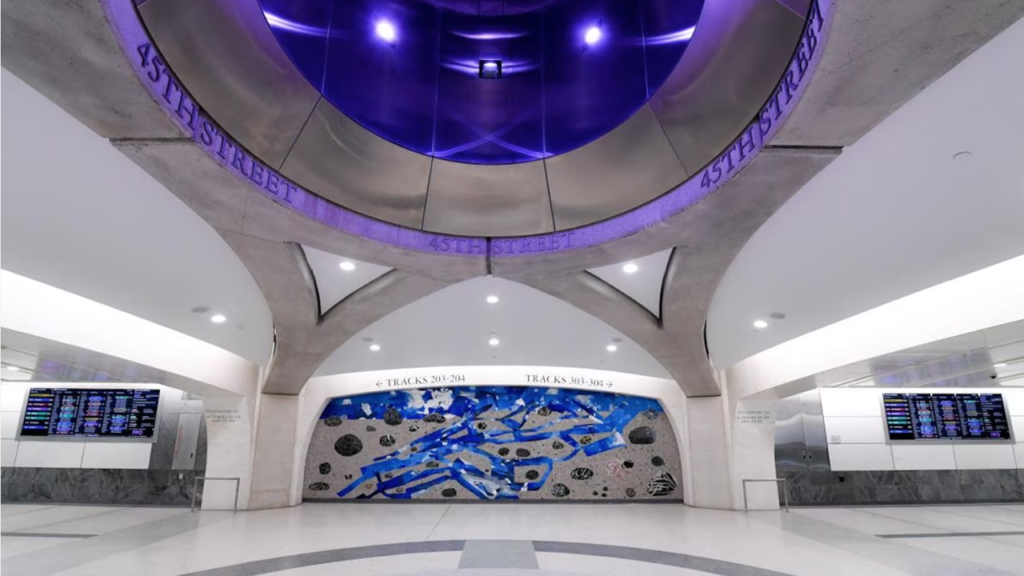
“This is an exciting day for New York and for the MTA,” Lieber said, noting that, at one time, he was warned not to get “too associated’ with the project. Now that it has been completed, he stated: “We’re giving something back to Long Islanders and the people of Queens … This project brings Long Island closer to the heart of New York City.” He said the project was “a hot mess” when he started working on it, but added, “We got it together.” He specifically praised the construction workers “who showed up through COVID” and concluded by inviting everyone to “come see this amazing new facility.”
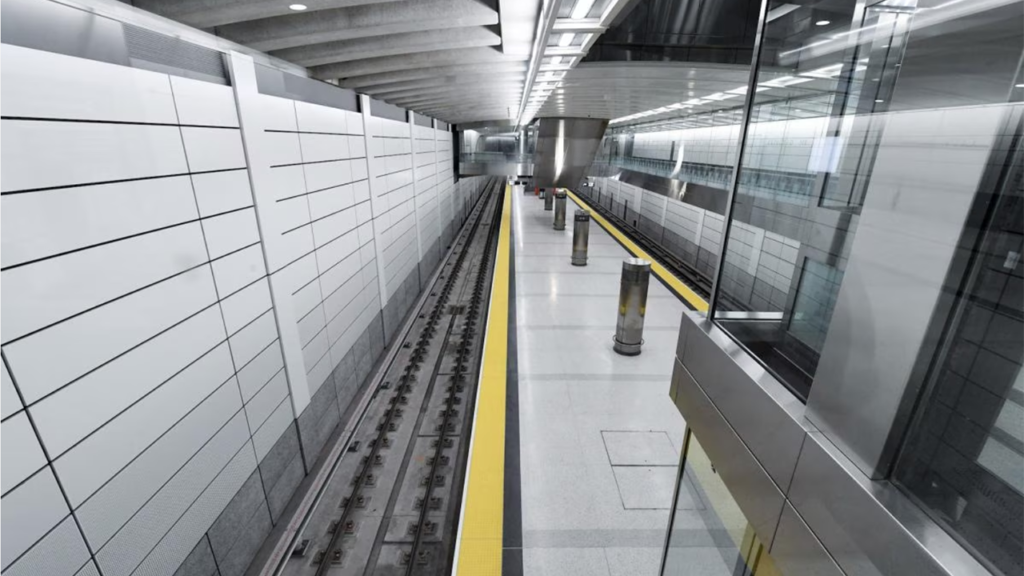
Regarding a permanent schedule, Hochul said it would probably start “in about three or four weeks.” When asked how the project could have been sped up, she answered, “Bring in Janno Lieber a lot earlier.” Lieber made some recommendations for getting a mega-project like this one done more efficiently. He suggested clear integration of the project, using design/build principles, and coordinating outages and other events with other participants. Hochul also put in a plug for the proposed Interborough Express project, which would connect Queens and Brooklyn with a new light rail line that would have a circumferential routing and connect several subway and elevated lines.
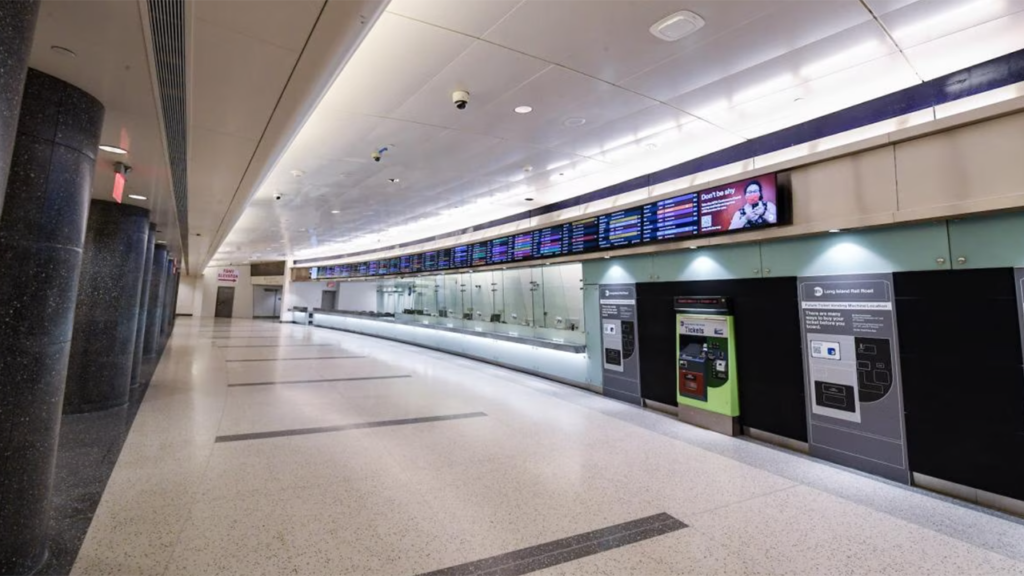
New Service Pattern
The current service pattern is temporary. An MTA press release touted the coming permanent service plan, with improvements especially during peak-commuting periods, including in the “reverse” direction toward jobs on Long Island. The agency is claiming that there will be a 41% increase in weekday service system-wide, with 274 more trains on weekdays, counting both directions. There are now “combo tickets” available for riders between Long Island and Metro-North territory. Those passengers would transfer between GCT for Metro-North and Grand Central Madison for the LIRR.
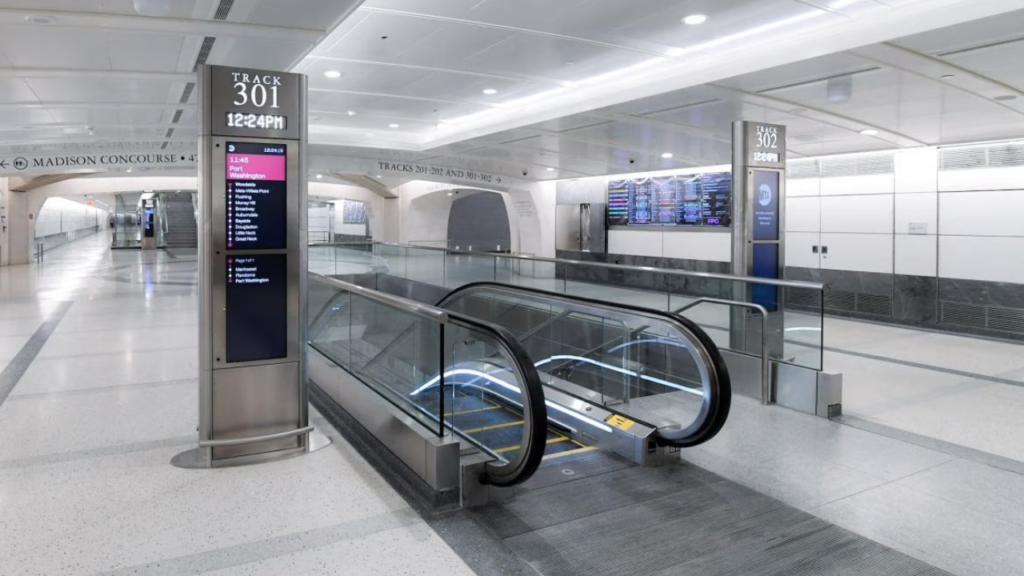
Connections at Jamaica will change under the new plan. Under current schedules, Jamaica is the major transfer point between trains connecting with Penn Station, and those connecting with Atlantic Terminal. When full service to and from Grand Central Madison begins, most trains to and from Brooklyn will be shuttles between there and Jamaica scheduled to run every 20 minutes. Only the West Hempstead Branch, where service is among the lightest on the LIRR’s lines, will still run full service to and from Atlantic Terminal through Jamaica.
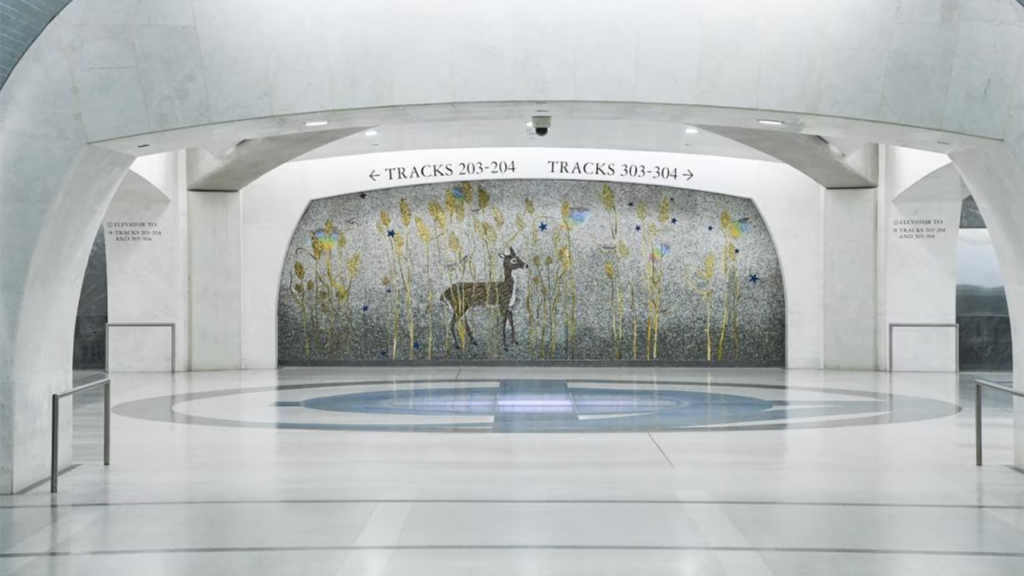
Connectivity at Grand Central Madison might be suboptimal in the opinion of some riders and advocates, but the LIRR now truly serves both Manhattan’s East and West sides. There are also plans to run Metro-North trains to and from Penn Station on the Hudson Line on the connector that Amtrak’s Empire Service trains currently use, and on the New Haven Line (Northeast Corridor) through the East Bronx and over the Hell Gate Bridge (the current route for Amtrak trains to Boston, as well as some that branch off at New Haven and go to Springfield and Vermont). There are plans to build four new stations along that line,. The upshot will be that Metro-North riders on the Hudson and New Haven Lines will have trains to and from Penn Station and Grand Central, similar to what Long Islanders now have. Harlem Line riders will not have Penn Station trains.
